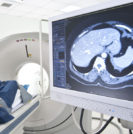News Flash: MRI Screening Reduces Unnecessary Prostate Biopsies

Did your doctor say it’s time for a biopsy, based on your PSA results? Do you shudder at the idea? How do you know you really need to have 12+ randomly placed needles throughout your prostate gland? The answers to these questions can be found in a Swedish paper published online July 9, 2021 by keep reading









